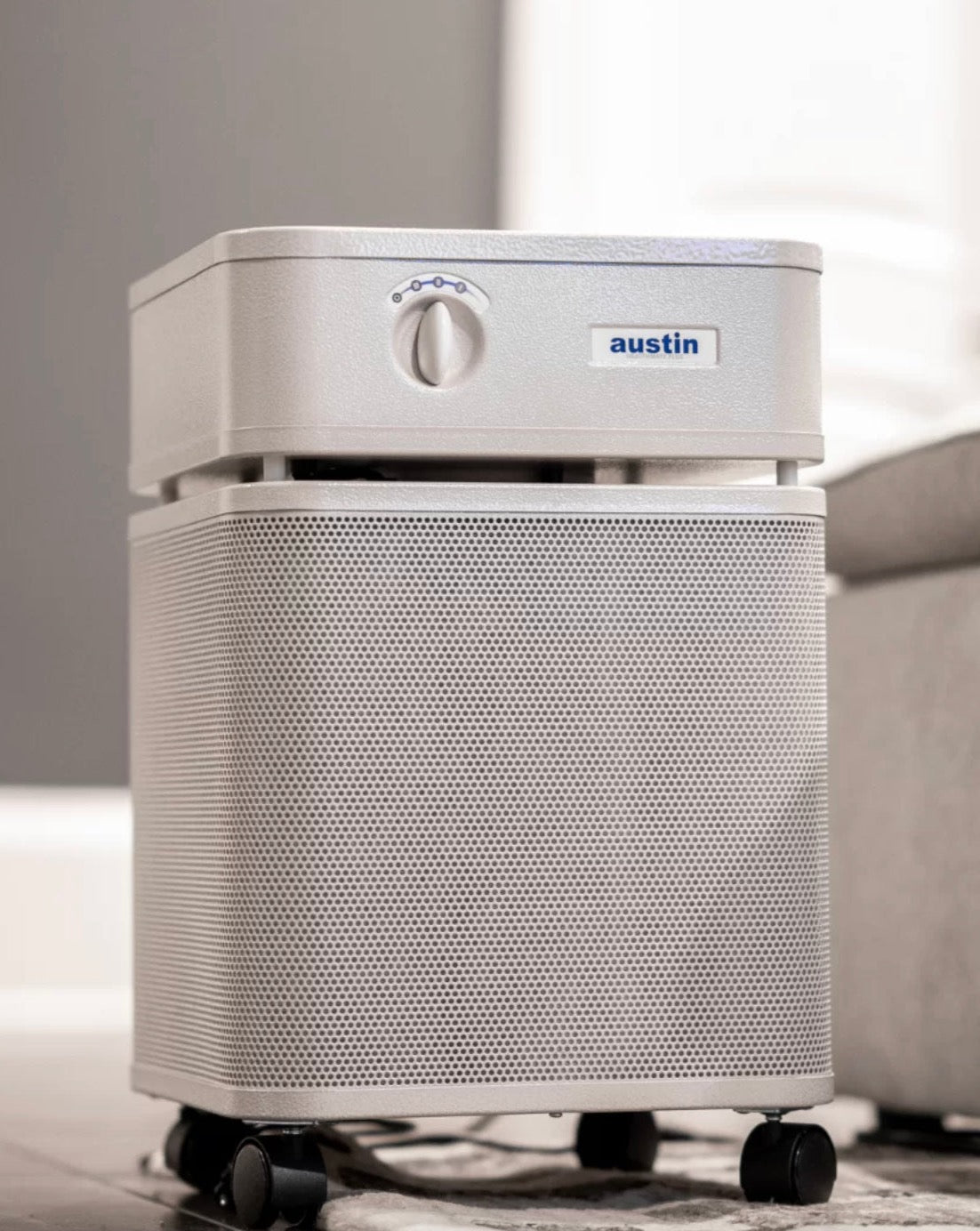










Mica-free
Buildable light-in-feel non-cakey coverage
Sensitive skin-approved
🌿 See the minimalistic, FULLY DISCLOSED clean ingredient list below 🌿
Fully disclosed in descending order:
Water
Water serves as the base and solvent for the formula, providing a liquid consistency and serving as a carrier for other ingredients.
Sesamum Indicum (Sesame) Seed Oil
Sesame Seed Oil functions as an emollient, contributing to the silken texture and providing moisturizing properties to the skin.
Sorbitol
Sorbitol acts as a humectant, attracting and retaining moisture in the skin, contributing to hydration and a luxuriously smooth application.
Persea Gratissima (Avocado) Fruit Extract
Avocado Fruit Extract provides nourishment and may offer skin-conditioning benefits.
Aloe Barbadensis Leaf Extract
Aloe Vera Leaf Extract soothes and hydrates the skin, providing a calming effect.
Simmondsia Chinensis (Jojoba) Seed Oil
Jojoba Seed Oil acts as a moisturizer, providing hydration to the skin, and contributes to the formula's overall emollient properties.
Glycerin
Glycerin acts as a humectant, attracting and retaining moisture in the skin, contributing to hydration and the luxurious 'feel' of the formula.
Cetearyl Alcohol
Cetearyl Alcohol functions as an emulsifying agent and thickener, contributing to the texture and stability.
Butyrospermum Parkii (Shea Butter)
Shea Butter is a rich emollient that adds moisture and helps nourish the skin, promoting a smooth and creamy consistency that is not heavy or skin-clogging.
Lecithin
Lecithin may function as an emollient and texture enhancer.
Silica
Silica is a mineral that helps absorb excess oil, mattifying the skin and providing a smooth, non-greasy finish (that is still non-drying to even the most sensitive and/or dry skin).
Xanthan Gum
Xanthan Gum works as a binder and stabilizer, preventing separation of ingredients.
Phenoxyethanol
Phenoxyethanol serves as a preservative, helping to maintain the cosmetic's shelf life by inhibiting the growth of bacteria and fungi.
Kaolin
Kaolin, a type of clay, contributes to the formula's texture and may provide oil-absorbing properties, promoting a matte finish.
Potassium Sorbate
Potassium Sorbate serves as a preservative, helping to prevent the growth of microorganisms.
. . . and, lastly, for color,
Iron Oxides (Non-Nanoparticle and Uncoated)
Iron Oxides are mineral pigments that provide color to cosmetic products. They are safe for use on the skin and add pigmentation to enhance the product's appearance.
Titanium Dioxide (Non-Nanoparticle)
Titanium Dioxide is a mineral pigment that provides sun protection by reflecting and scattering UV rays, making it a common ingredient in sunscreens.
Heal Yes! does NOT test on animals - not our raw ingredients or finished formulas.
We're proud to be certified by PETA and Leaping Bunny:
Leaping Bunny leads the cruelty-free makeup standard and holds certified companies accountable.
PETA, People for the Ethical Treatment of Animals, has certified Heal Yes! as cruelty-free as part of their commitment to preventing animal cruelty and testing.
NOTE: While cruelty-free products are not tested on animals, they may still contain animal-derived ingredients. It's always important to vet ingredients carefully to ensure they align with your values and quality standards. For instance, while a product might be vegan, this does not inherently guarantee its quality or ethical sourcing, either. Additionally, some brands may use trendy ingredients like tallow or emu oil, which are often associated with unethical obtainment practices. Therefore, it's essential to thoroughly research and consider both the cruelty-free and vegan status of products, as well as the ethical implications of their ingredient sources.

Why Ensure Cruelty-Free
Opting for cruelty-free makeup offers benefits that appeal to consumers who prioritize ethical and sustainable choices. Consider these benefits of choosing cruelty-free makeup:
Animal Welfare Advocacy: Choosing cruelty-free makeup sends a message to the cosmetics industry that there is a demand for products that are not tested on animals. This encourages more brands to adopt cruelty-free practices and promotes a shift toward animal-friendly alternatives.
Personal Values Alignment: For individuals who value animal rights and welfare, using cruelty-free makeup allows them to align their personal values with their purchasing choices. It provides peace of mind that their beauty routine is in line with their ethical beliefs.
Product Safety and Quality: The development of cruelty-free makeup often involves the use of alternative testing methods such as in vitro testing, computer modeling, or relying on existing safety data. These methods can provide accurate assessments of product safety and quality without the need for animal testing. Caveat: while supporting small and often at-home brands can be an amazing choice, do ensure they have rigorous testing methods in place, which can be atypical for super small at-home brands without professional lab and testing experience to implement.
Innovation and Scientific and Societal Advancements: The wonderful shift toward cruelty-free cosmetics encourages the development and adoption of innovative, animal-free testing methods. This stimulates scientific advancements in non-animal testing techniques, benefiting both the cosmetics industry and other areas of scientific research.
Environmental Considerations: Many cruelty-free brands also prioritize sustainability and environmental responsibility. Not all, but many. They often employ eco-friendly packaging, use sustainable, natural, and, ideally, organic ingredients, and promote environmentally conscious practices, reducing their impact on the planet.
Consumer Awareness and Transparency: The rise of cruelty-free makeup has led to increased awareness among consumers about animal testing and ethical choices. This encourages brands to be more transparent about their practices and ingredients, providing consumers with the information they need to make informed choices.
Overall, the benefits of cruelty-free makeup extend beyond personal use, encompassing animal welfare, ethical values, innovation, and environmental consciousness. By choosing cruelty-free options, consumers contribute to a more compassionate and sustainable beauty industry that we need to continue to challenge and encourage to be at its best.
The use of the terms "comedogenic" and "non-comedogenic" (as well as "natural" and "hypoallergenic") in the beauty industry is primarily based on manufacturers' claims, creating a landscape where different companies employ various approaches to determine the comedogenicity of their products:
Some manufacturers conduct their own assessments, utilizing methodologies that may include ingredient analysis, historical data, expert opinions, or existing research to support their claims.
Smaller boutique and home-made brands might use the terms and have no testing back-up at all.
It's imperative to note that the absence of standardized guidelines means that the terms "comedogenic" and "non-comedogenic" are not regulated by authoritative bodies like the U.S. Food and Drug Administration (FDA) or the European Medicines Agency (EMA). Therefore, the lack of consistent definitions or thresholds for what constitutes comedogenic or non-comedogenic further adds to the uncertainty.
Given the absence of regulatory oversight and standardized criteria, it is wise to approach claims of comedogenicity with some skepticism. What may be comedogenic for one person may not be for another, as individual skin types and responses can vary significantly. . . .
Relying on personal experiences, recommendations from trusted sources, and seeking guidance from dermatologists or skincare experts can help in finding products that suit your specific needs and skin type. It is also essential to evaluate each ingredient as well as the overall formula when assessing potential comedogenic effects.
Sometimes an ingredient that may be personally considered comedogenic can still function well within the synergy of the entire formula. This refers to how the ingredients work together to create a product that may not cause adverse reactions:
For instance, some might regard certain organic oils and waxes as comedogenic. Shea butter, for instance, is a hydrating 'yes' to many but a no-go for some; however, in a gentle formula with proper emulsifying counterpart ingredients and natural solvent-functioning ingredients, shea butter could still bode well and not make the overall formula "comedogenic."
Conversely, a seemingly impressive ingredient panel can still trigger a negative response in some individuals.
We all have unique needs and tolerance levels, so finding the right products may involve some trial and error. Therefore, it is advisable to find formulas backed with friendly return/exchange policies and, whenever possible, consider samples to test on your skin before committing to full sizes.
Taking these precautions can help minimize the risk of reactions and allow you to make more informed decisions when selecting makeup products for your sensitive skin!










































